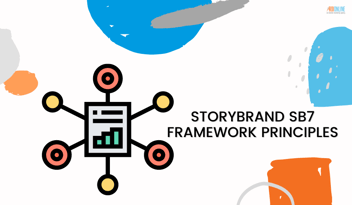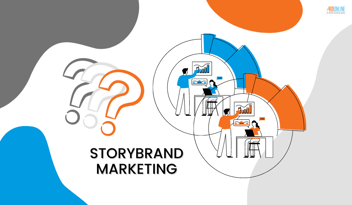How StoryBrand Can Help Nonprofit Organizations Reach Bigger Audiences
Growing an audience can be a challenge no matter what the industry. But if your organization is a nonprofit, you have even bigger hoops to jump through.
Not only do nonprofits need a powerful message that resonates across many different platforms, but they also need to speak to their organization’s goals and needs while remembering to keep a keen focus on the real heroes of their story: those who benefit from the services (or products) they’re offering.
Losing sight of the audience is one of the first challenges most nonprofits run into. The mission gets lost in all the surplus noise of running a business. Let’s be honest here, your organization may be a nonprofit, but even nonprofits have to survive.
So, while you’re trying to keep up with all the mundane and necessary tasks of running a successful organization, you will also need to get your message out there so you can get more volunteers, reach more donors, and help more people.
That’s a tall order. And you might be shaking your head with the sheer magnitude of it all. But with StoryBrand, you can not only create messaging that resonates with your audience, but you’ll also gain the foundation to grow your organization and make an even bigger impact.
1. Identify Your Audience
Ask yourself: What does our story’s hero want? Are we known for providing that need – be it a service, product, or another commodity?
Every company, including nonprofits, should be known for one thing – preferably one thing – that makes them stand out from a crowd of similar organizations. Once you have that nailed down, you will be able to craft a message tailored to your audience.
2. Create Your Story
There is a very good reason why parents use morality stories to teach their children valuable lessons. Stories capture the imagination and engage the minds of the listener. That makes stories a powerhouse in marketing campaigns.
It all comes back to stories. Knowing your story and the characters in it allows you to craft scenes that allow your hero to succeed, their guide to remain wise, and the hurdle you’re boosting them over to be cleared effortlessly. These stories strengthen the relationship between your nonprofit and those who benefit from your services. They provide a strong foundation to build lasting relationships with the donors and volunteers that help keep your nonprofit funded.
3. Think More Deeply.
When you have your story, it’s time to weave in your marketing strategy and grow your audience. Promoting is something that many nonprofits shy away from, mostly because it’s often associated with being “pushy” or “salesy.”
However, promoting your content doesn’t have to mean either of those things—not when you have the right strategy. A promotion strategy could be anything from boosting a blog post or creating an ad to spread awareness for an upcoming event.
Whichever techniques you use to promote your brand, be sure to keep the message consistent. Even if you’re promoting different things, it’s crucial that all your content reflects your story, drive, mission, and voice.
This is why StoryBrand is such a useful and effective tool for every nonprofit to clarify its message from the start. That way, every piece of content and promotional strategy resonates with the right people.
How to Use StoryBrand to Grow Your Audience
The key to building your audience begins with understanding your company’s message. You need to get your message straight.
Once you have that nailed down, the work begins. It may sound daunting or ambiguous, but once you know where to start, the rest falls into place. Follow these five easy steps to use the StoryBrand framework to get the word out about your mission and help more people.
Clarifying your message isn’t difficult and can be accomplished by answering the following questions:
- What’s the problem your company fixes?
- How does the problem make the hero feel?
- Why can your company be trusted to fix that problem?
- What will the hero’s life look like after the problem is fixed?
When you provide your audience with a clear message, it’s easier for them to latch on to the idea that, “Hey, this could be what I’m looking for!”
2.Turn your website into a marketing machine.
I can hear you now, “But I want my website to be a one-stop information source!” Shake that idea right out of your head.
You have marketing pieces to do that legwork, why waste space or repeat yourself? Today’s nonprofit websites should be kept simple:
- Highlight what you offer
- Demonstrate how that will make the hero’s life better
- Provide a pathway to obtaining that service/product/commodity
3. Create a lead-generating PDF.
Content marketing is where you can really start building your audience. In order to create effective content, you want people to actually read it and like it enough to share it and be willing to provide you with their contact information (email address/phone numbers).
There are many different marketing pieces that can generate a lead, but the lead generating PDF is a key element of the StoryBrand Marketing Roadmap.
These PDFs can:
- Put your product in the spotlight
- Highlight customer’s problems
- Solve customer’s problems
- Curate trust
- Position your nonprofit as an authority
- Bring free value to customers
There are also many different types of lead generating PDFs you can offer, including:
Infographics – Eye-catching and appealing, infographics are easy to digest and easier to share on social media and blogs. It’s also great for showcasing the effectiveness of your nonprofit or explaining how the program works.
Topic examples could include:
- 10 Reasons Volunteering Time To Tutor Young Readers Makes a Lasting Difference
- 8 Ways To Lower Your Family’s Carbon Footprint
- 5 Simple Steps To Implementing A Recycle Program In Your Community
Checklists – Basic, fast, simple, effective – what more could you want? A checklist can be used to list pain points or benefits.
For example, if your nonprofit is a conservation land trust, you can have a checklist that reviews the toll tourists may take on natural resources and include a question like “Do lakes in your area experience more litter in the summer?” and follow it up with an answer, “Our organization volunteers 40 hours each month to cleaning up the banks of our lakes and streams.”
Examples of checklist topics:
- Does Litter Increase In the Summer?
- Do You Know The Damage Invasive Plant Species Have On Our Waterways?
- 8 Questions To Bring Up At Your City’s Next Budget Planning Meeting
Value list – A list that provides value to your audience. Example topics could include:
- 10 Reasons You Want To Start A Neighborhood Recycle Program
- 5 Signs You Might Have An Invasive Fish In Your City’s Lake
- 7 Things You Can Do To Foster Community Pride
One thing to remember: it takes a strong understanding of who your audience is in order to create a top-performing value list!
There’s no right or wrong format to choose, so long as the type you select matches the content. However you do it, lead generating PDFs are incredibly effective ways to share your story, keep your nonprofit in the minds of your audience, and position yourself as a trusted guide.
4. Create an automated email campaign.
Create a savvy email marketing campaign that positions your customer’s interests front and center. This type of email campaign is a virtual sales force that never stops working. Touchpoints trigger actions that move your audience through the funnel.
Remember: they’re the hero; you’re the guide. Show them the way to solve their problem, and they’ll move effortlessly through the buyer’s journey and into a closed deal.
5. Gather Customer Testimonials
Nothing speaks louder, or with more authority, than a happy customer who is willing to sing your praises. Gather their stories, weave them into your narrative, sprinkle them like water throughout your narrative and watch your audience grow.
Tell Your Story. Share Your Message. Make A Difference.
Your nonprofit organization makes a difference in the lives of the people you support. There is already a need and, whenever there is a need, there is a strong story behind it. StoryBrand helps you identify that story.
That’s the first step in laying the groundwork to engaging your target audience. Implementing the marketing framework provided by StoryBrand is the second step to achieving first-rate storytelling that increases your brand’s personality while continuing to keep it human.
And that’s how StoryBrand can create an engaged group of followers and boost your nonprofit’s audience.
If you’re interested in a free StoryBrand strategy session to learn more about how StoryBrand can help clarify your message, revolutionize your marketing, and grow your audience, contact us today!
ROI Online was one of the first StoryBrand-Certified Agency. One of our team members is certified as a Guide, has attended a StoryBrand workshop and fully embraces the framework and message. We also have a StoryBrand-Certified Copywriter on staff.





